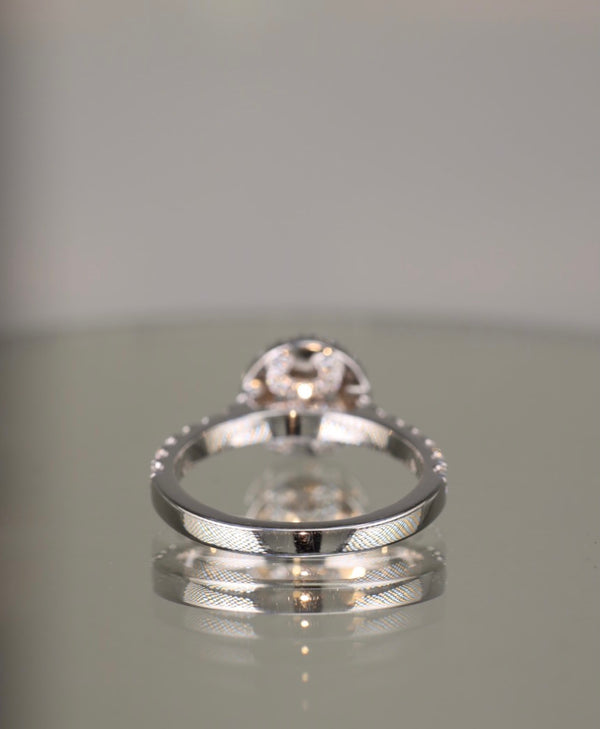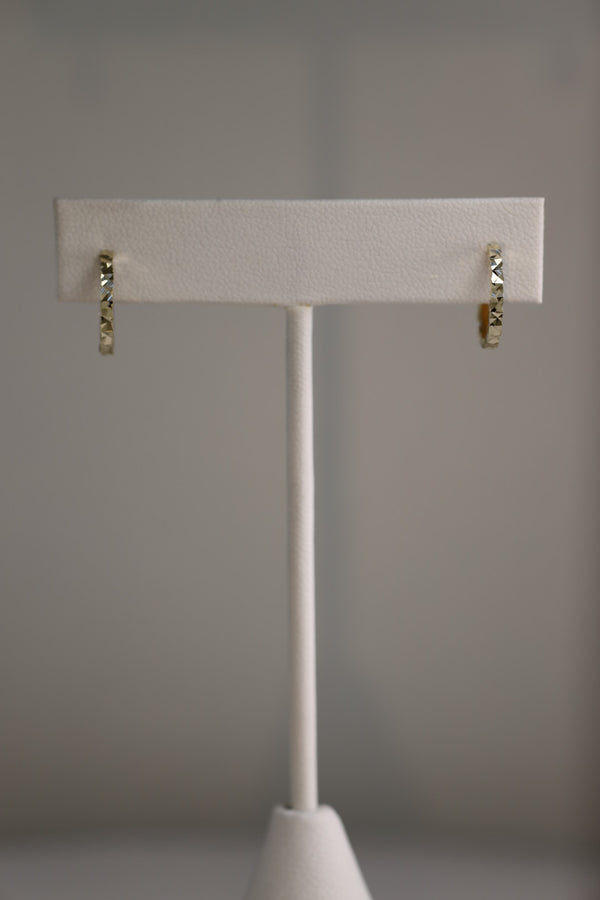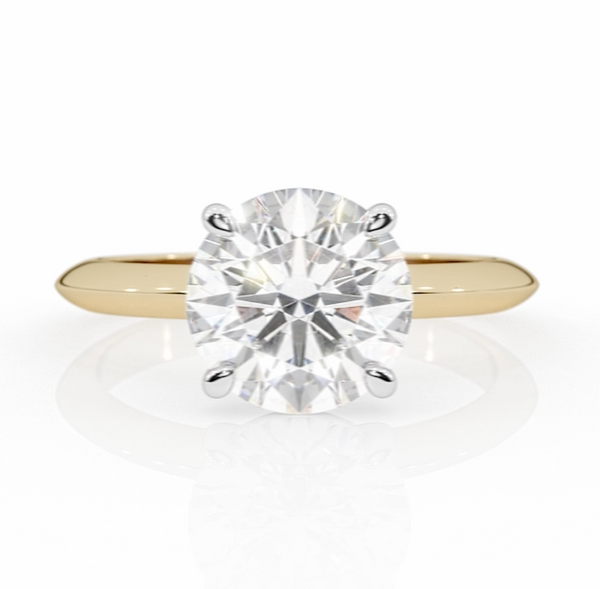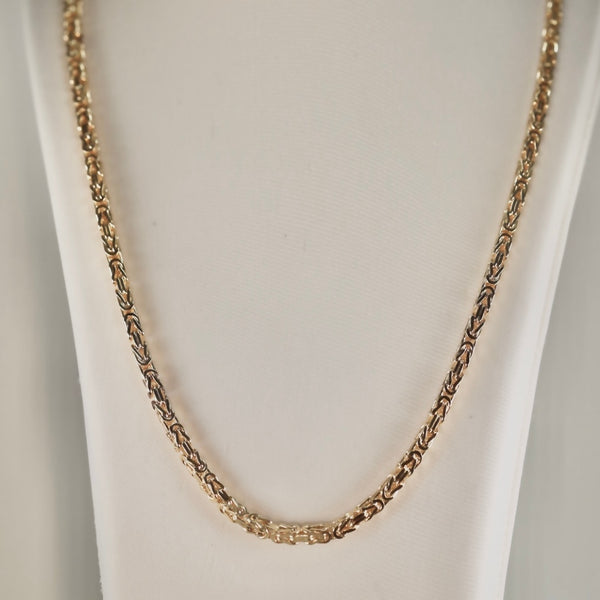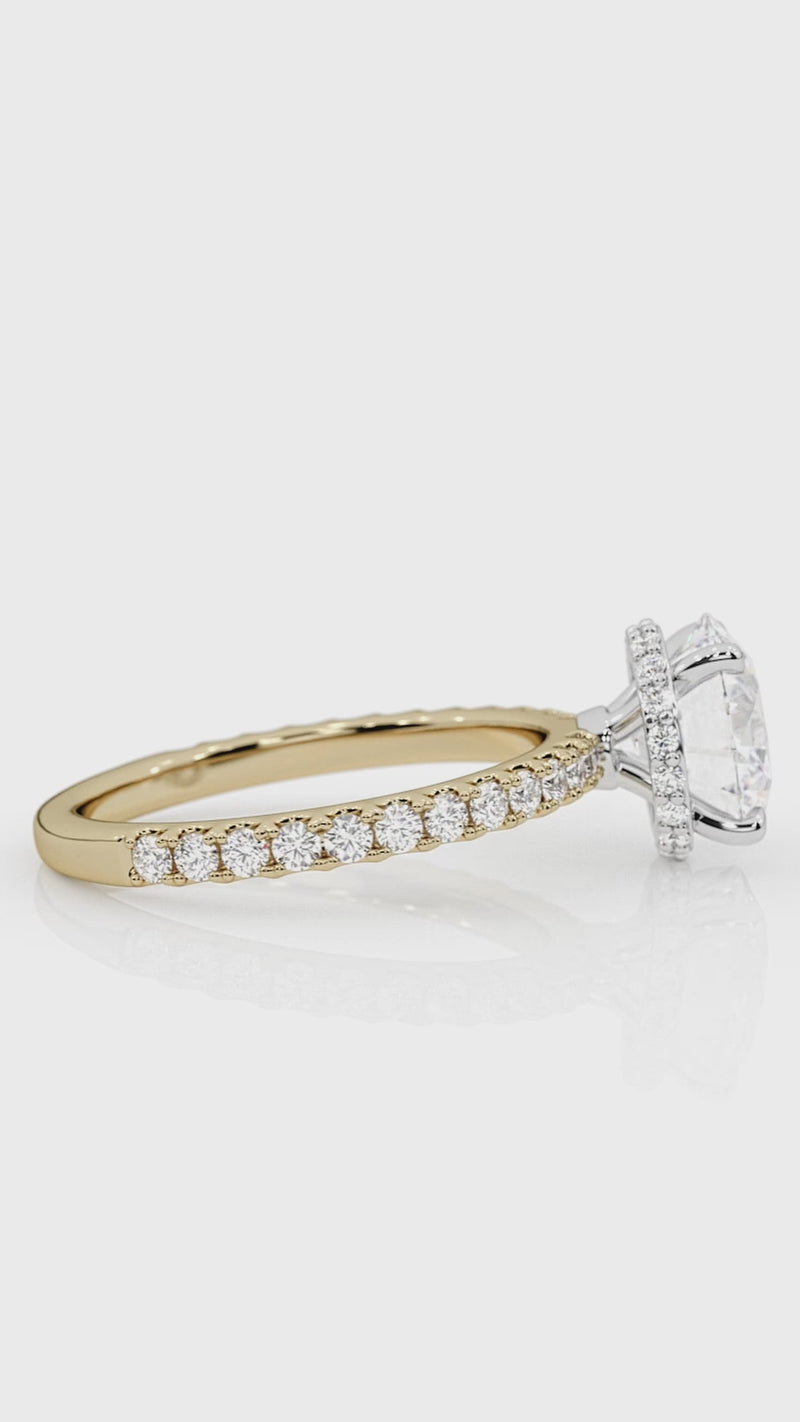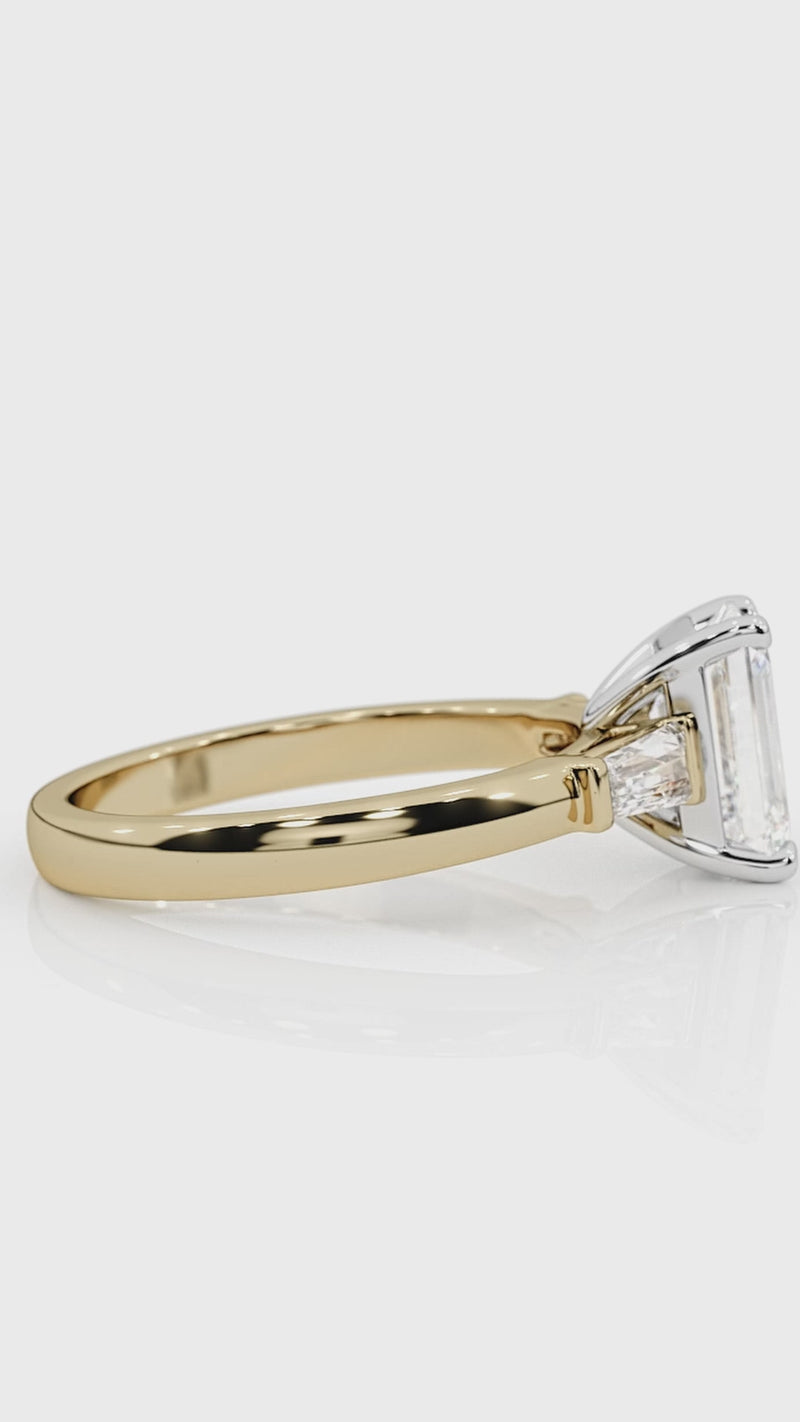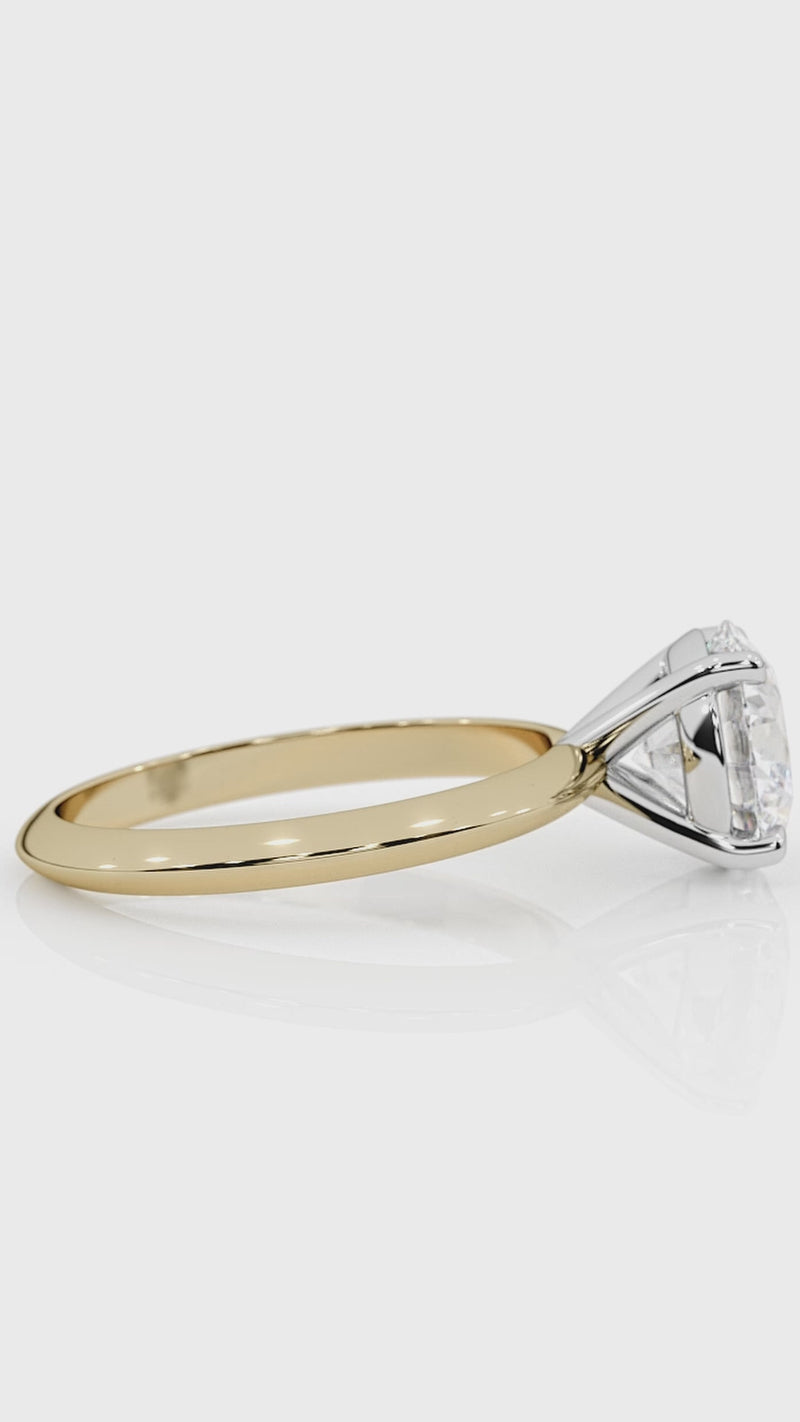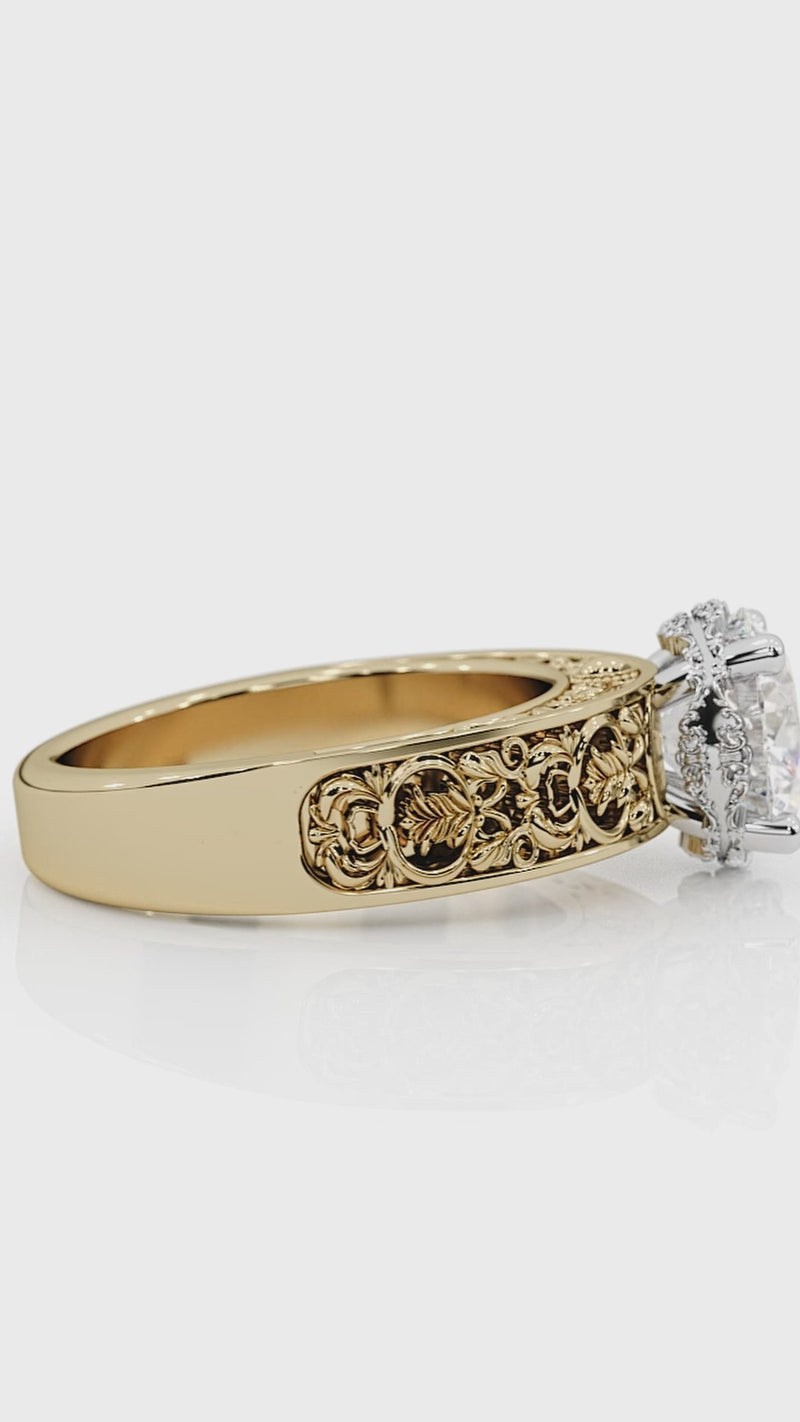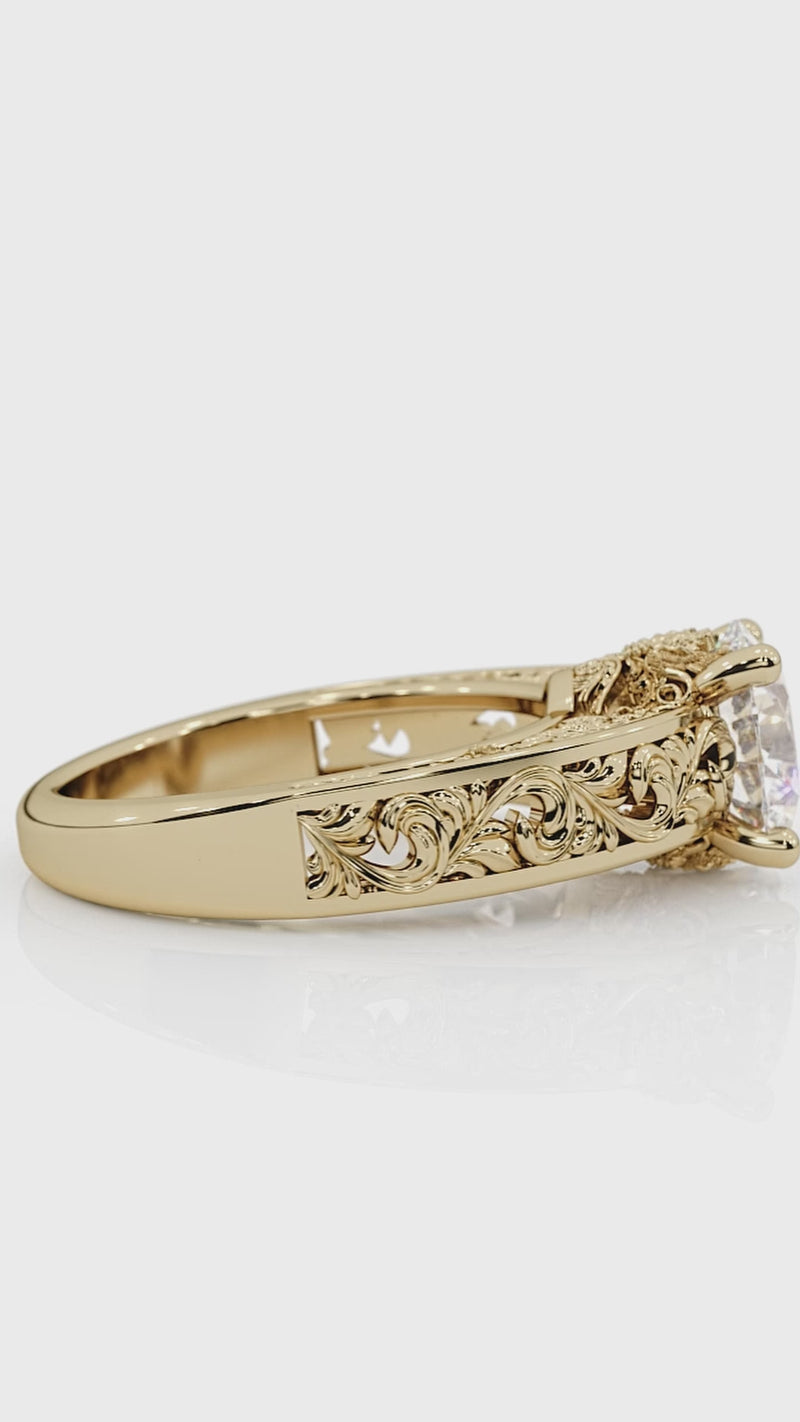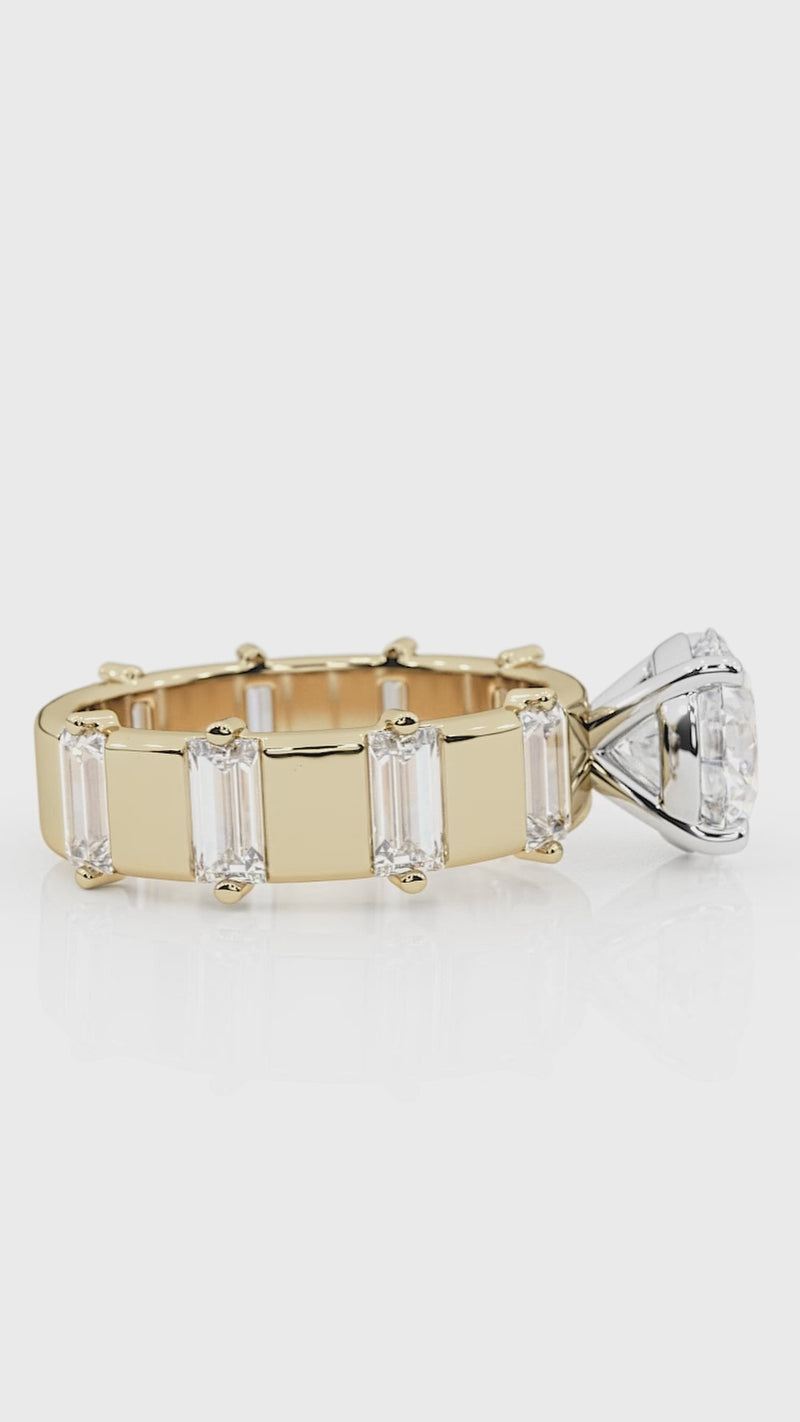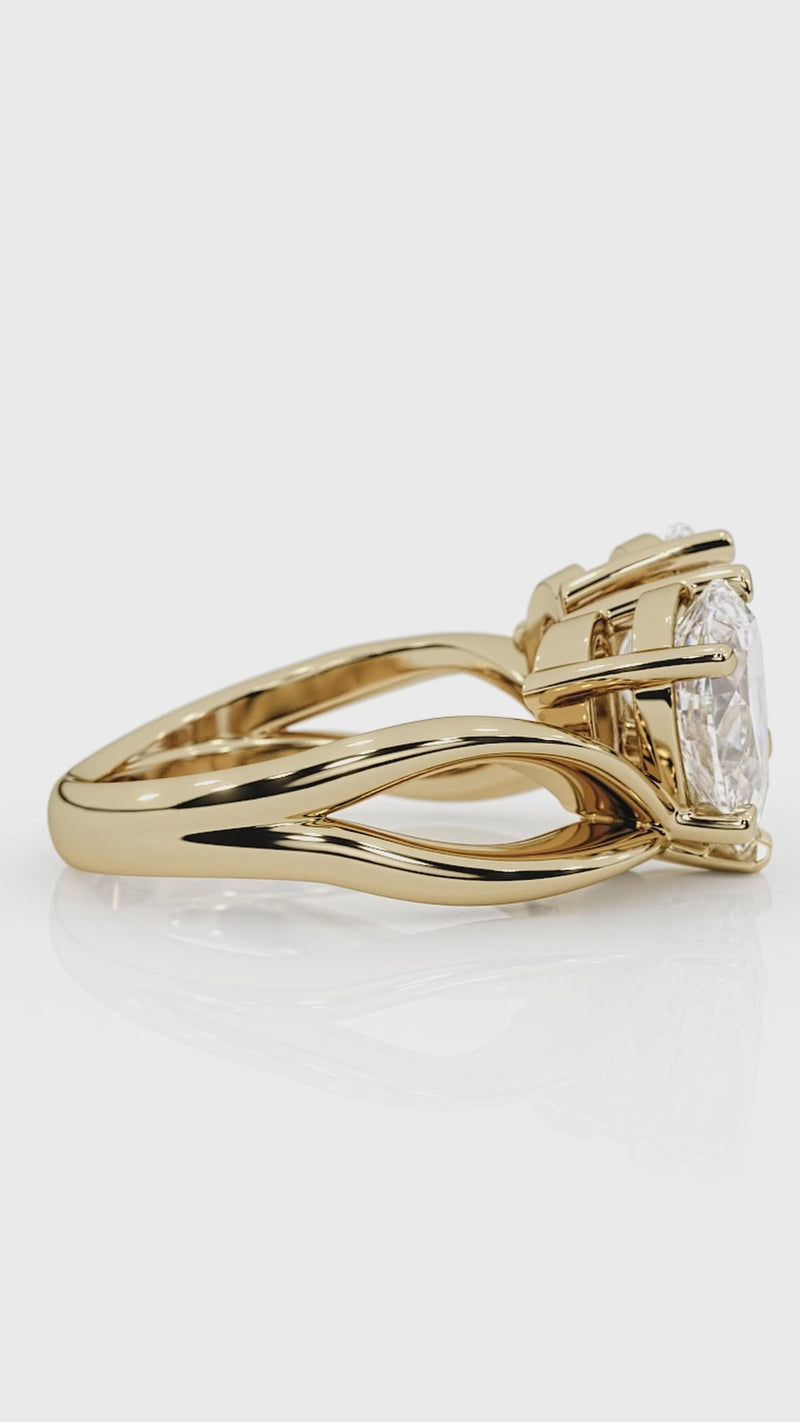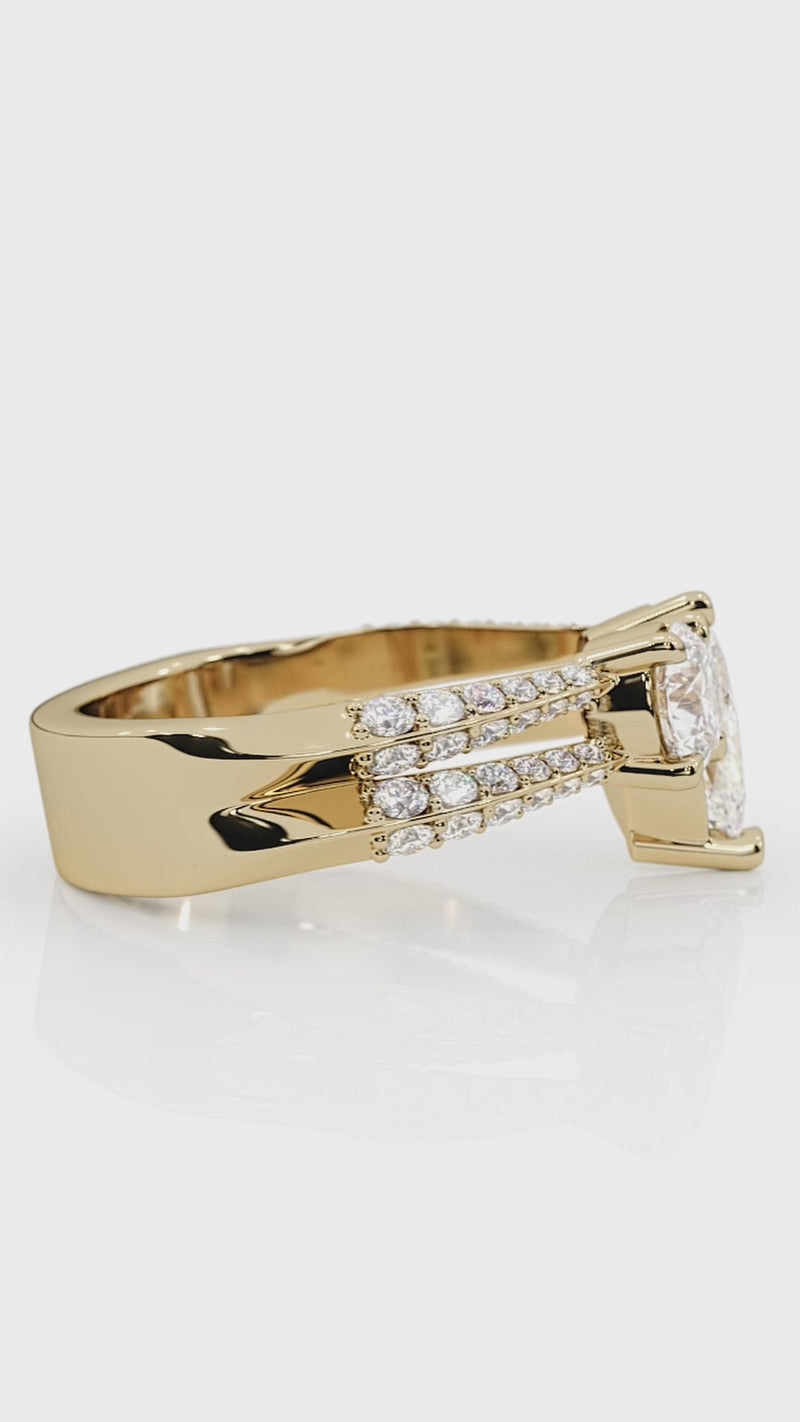Diamond Cut Chart: The Gateway to Dazzling Brilliance
By Nick Coutu
Welcome to my comprehensive guide on the diamond cut chart, a crucial resource for understanding why cut reigns supreme among the “4 Cs.” My name is Nick Coutu, and I’ve spent years studying and working with diamonds—both mined and lab-grown. In this post, I’ll reveal how legendary mathematician Marcel Tolkowsky revolutionized the modern ideal cut, why “cut” is the single most important factor for maximizing sparkle and brilliance, and how you can use a diamond cut chart to make a savvy purchase that truly amazes.
Table of Contents
- Why Cut Matters More Than Carat
- Your Diamond Cut Chart for Maximum Brilliance
- How to Read a Diamond Cut Chart
- Why a Diamond Cut Chart Matters More Than You Think
- Marcel Tolkowsky’s Legacy
- Striking a Balance with the Other Cs
- Cut Grading and Proportions
- 3 Quick Tips for Using a Diamond Cut Chart
- Budget vs. Brilliance: A Numbered Guide
- FAQs
- Summary
Why Cut Matters More Than Carat
When it comes to overall sparkle, cut outranks the other Cs. You can have a high-carat diamond, but if the facets are misaligned or the angles aren’t precise, the diamond will lack presence and underperform. Meanwhile, a smaller diamond with an excellent cut grade will exhibit breathtaking flashes of light (brilliance) and rainbow colors (fire).
This phenomenon stems from a diamond’s ability to reflect and refract incoming light. If the pavilion and crown are too deep or too shallow, light leaks out the sides or bottom. A precise cut ensures light gets bounced straight back into your line of sight. The result? That wow factor we all crave.
Pro Tip: A well-cut diamond often appears larger than its carat weight, thanks to superior light performance.
Your Diamond Cut Chart for Maximum Brilliance
A diamond cut chart is an indispensable tool for visualizing the angles, proportions, and facet arrangements that maximize scintillation. The best gemological institutes, like GIA and IGI, base their cut grading systems on the research of many contributors. In my opinion, none is more compelling than Marcel Tolkowsky’s ideal proportions—the dimensions determined by his research. Maximizing a diamond’s brilliance, fire, and scintillation all hinge on alignment with the following proportions.
Below is a simplified diamond cut chart showing the recommended crown and pavilion angles for a round brilliant diamond. These angles ensure the best possible light return:

Keeping these metrics in check guarantees your diamond has that
hypnotic sparkle. While these exact proportions are difficult to find, the following range represent the next grade in the chart after ideal, "excellent cut":
-
Crown Angle: ~34° to 35°
-
Pavilion Angle: ~40° to 41°
-
Table Percentage: ~53% to 58%
-
Depth Percentage: ~59% to 60%
How to Read a Diamond Cut Chart
A diamond cut chart typically highlights:
-
Table Size (the top facet as a percentage of the total width of the diamond)
-
Crown Angle (the angle at which the crown facets meet the girdle)
-
Pavilion Angle (the angle between the pavilion facets and the girdle)
-
Depth Percentage (overall depth of the diamond relative to its width)
In a perfect world, each of these factors aligns with Tolkowsky’s ideal so that maximum brilliance, fire, and scintillation come alive in every facet of the stone.
Why a Diamond Cut Chart Matters More Than You Think
Even slight deviations in angles can drastically affect light performance. If the crown angle is too steep, for instance, the diamond can look darker at the center. If the pavilion is too shallow, you lose that powerful internal reflection. A diamond cut chart helps you see what’s happening under the hood, allowing you to confirm whether the proportions meet the “ideal” or “excellent” thresholds.
The precision of angles, symmetry, and facet alignment is what ultimately makes or breaks a diamond’s visual allure.
Marcel Tolkowsky’s Legacy
In 1919, Marcel Tolkowsky published his doctoral thesis, “Diamond Design: A Study of the Reflection and Refraction of Light in a Diamond.” Through rigorous math and physics, he pinpointed the optimal proportions for a round brilliant cut. His research gave us the fundamentals of the modern diamond cut chart, and gemological laboratories have refined these guidelines over time—but the core principles remain unchanged.
Fun Fact: Despite advancements in laser cutting and 3D modeling, Tolkowsky’s calculations still hold remarkable accuracy in explaining how diamonds achieve maximum sparkle.
Striking a Balance with the Other Cs
While cut is the primary driver of brilliance, the other Cs—carat, color, and clarity—still play their parts. However, prioritizing cut can help you save money by slightly lowering color or clarity grades while still achieving a mesmerizing stone. A top-tier cut can mask minor inclusions and faint body color because the intense sparkle commands attention.
Want more insights? Check out my other posts:
These links will help you understand how to juggle all four Cs without sacrificing a diamond’s overall fire and brilliance.
Cut Grading and Proportions
Reputable labs like GIA and IGI assign a cut grade that usually falls into these categories:
-
Ideal (Round Brilliant only) – Perfect alignment with Tolkowsky’s angles
-
Excellent – Nearly perfect alignment with Tolkowsky’s angles
-
Very Good – Slight deviations in proportions but still highly reflective
-
Good – Acceptable balance, yet some light leakage is noticeable
-
Fair/Poor – Significant loss of light and brilliance due to imperfect angles
Cut grading also takes symmetry and polish into account. Even if a diamond meets certain angles, poor facet alignment or finishing can reduce overall sparkle.
Remember: Without an excellent cut, you’ll lose the potential for maximum brilliance—even if the diamond is otherwise high in clarity or color.
3 Quick Tips for Using a Diamond Cut Chart
-
Compare Angles: Look at the crown and pavilion angles. They should be close to Tolkowsky’s ideals.
-
Check Table %: Aim for 53–58%. Too large a table can reduce fire; too small can lower overall brilliance.
-
Depth % Matters: A balanced depth ensures the diamond isn’t too shallow or too deep, preserving sparkle.
Budget vs. Brilliance: A Numbered Guide
-
Decide on the Shape: Round brilliants traditionally follow Tolkowsky’s blueprint, but fancy shapes (oval, princess, cushion, etc) can also be cut well—just remember to verify those angles.
-
Lower Color or Clarity If Needed: Cut remains your top priority. You might afford a more impressive diamond by compromising slightly on color (F-G) or clarity (VS2-SI1).
-
Focus on Light Return: Even if you have a strict budget, a diamond cut chart can show you which stones have top-notch geometry.
-
Embrace Lab-Grown Options: These share the same physical properties as mined diamonds but often cost less, letting you prioritize a higher cut grade at a lower price.
-
Seek Certification: Make sure the diamond has a GIA or IGI report listing cut grade and proportions to confirm everything aligns with diamond cut chart standards.
Bonus Resource: Check out my other blog post, Best Diamond Shapes for Engagement Rings, to see how fancy cuts stack up against the round brilliant.
Time to do some diamond browsing.
If you’re ready to see how these principles apply in real life, check out our Diamond showroom at LCJewellery.com. This page allows you to see the vast number of options you have and ability to narrow down to find your perfect balance of cut, color, carat, and clarity. What do your 4 Cs of a diamond look like? Feel free to send us a message for guidance if you need!
Recommendation: Choosing a certified diamond helps protect your investment and gives you peace of mind about the gem’s specifications, authenticity, and origin.
About Me, Nick Coutu
Hello! I’m Nick Coutu, a passionate second generation jeweler with over 20 years of experience in the diamond industry. My journey began my parents founded Lessard Coutu Jewellery in the same year that I was born. I was raised among sparkling beauty and intricate craftsmanship and lucky for me, diamonds are in my blood. Over the years, I’ve dedicated myself to educating clients, ensuring they feel both informed and confident in their jewelry choices. Through my blog, I aim to simplify complex topics, making them accessible and enjoyable for everyone—from first-time buyers to seasoned collectors.
FAQs
Q1: Why is the diamond cut chart so important?
Because it visually breaks down the key angles and proportions that enable a diamond to reflect the most light, ensuring top-tier sparkle.
Q2: Does the diamond cut chart apply to fancy shapes?
Yes, but fancy shapes cannot be graded as Ideal. Although the angles differ from round brilliants, the concept of optimizing light return through specific proportions holds true for all shapes.
Q3: Can I rely on lab reports alone, or should I verify the chart myself?
Lab reports from GIA or IGI provide consistent, reliable data. However, reviewing a diamond cut chart can give you extra clarity and confidence when making your final selection.
Q4: Does Tolkowsky’s formula still apply today?
Absolutely. Modern technology fine-tunes the process, but Tolkowsky’s fundamental angles remain the gold standard for achieving maximum brilliance.
Q5: What if my budget doesn’t allow for a perfect cut?
Aim for at least “Excellent” in engagement rings, super important and statement pieces. "Very Good" cut diamonds are more acceptable for earrings, pendants, tennis bracelets, pavé, etc. You can adjust color or clarity to maintain your budget while still preserving brilliance.
Summary
Cut is the single most critical factor in a diamond’s appearance. By focusing on the diamond cut chart, you gain insight into how angles, proportions, and facet precision shape a stone’s brilliance, fire, and scintillation. Marcel Tolkowsky’s century-old research still influences today’s best cutters, ensuring every facet maximizes light return.
-
Prioritize a top-notch cut even if it means selecting a smaller carat or slightly lower color/clarity.
-
Leverage certification and a comprehensive diamond cut chart to confirm a stone’s proportions match your sparkle expectations.
-
Remember: A precisely cut stone can outshine and even appear larger than a poorly cut diamond of higher carat weight.
By understanding how to read and apply a diamond cut chart, you set yourself up for a purchase that truly captures the brilliance you deserve.
Links to More Insights
Thank you for reading! Be sure to explore our products at lcjewellery.com for diamonds meticulously aligned with Tolkowsky’s proven proportions.


 Keeping these metrics in check guarantees your diamond has that hypnotic sparkle. While these exact proportions are difficult to find, the following range represent the next grade in the chart after ideal, "excellent cut":
Keeping these metrics in check guarantees your diamond has that hypnotic sparkle. While these exact proportions are difficult to find, the following range represent the next grade in the chart after ideal, "excellent cut": 







